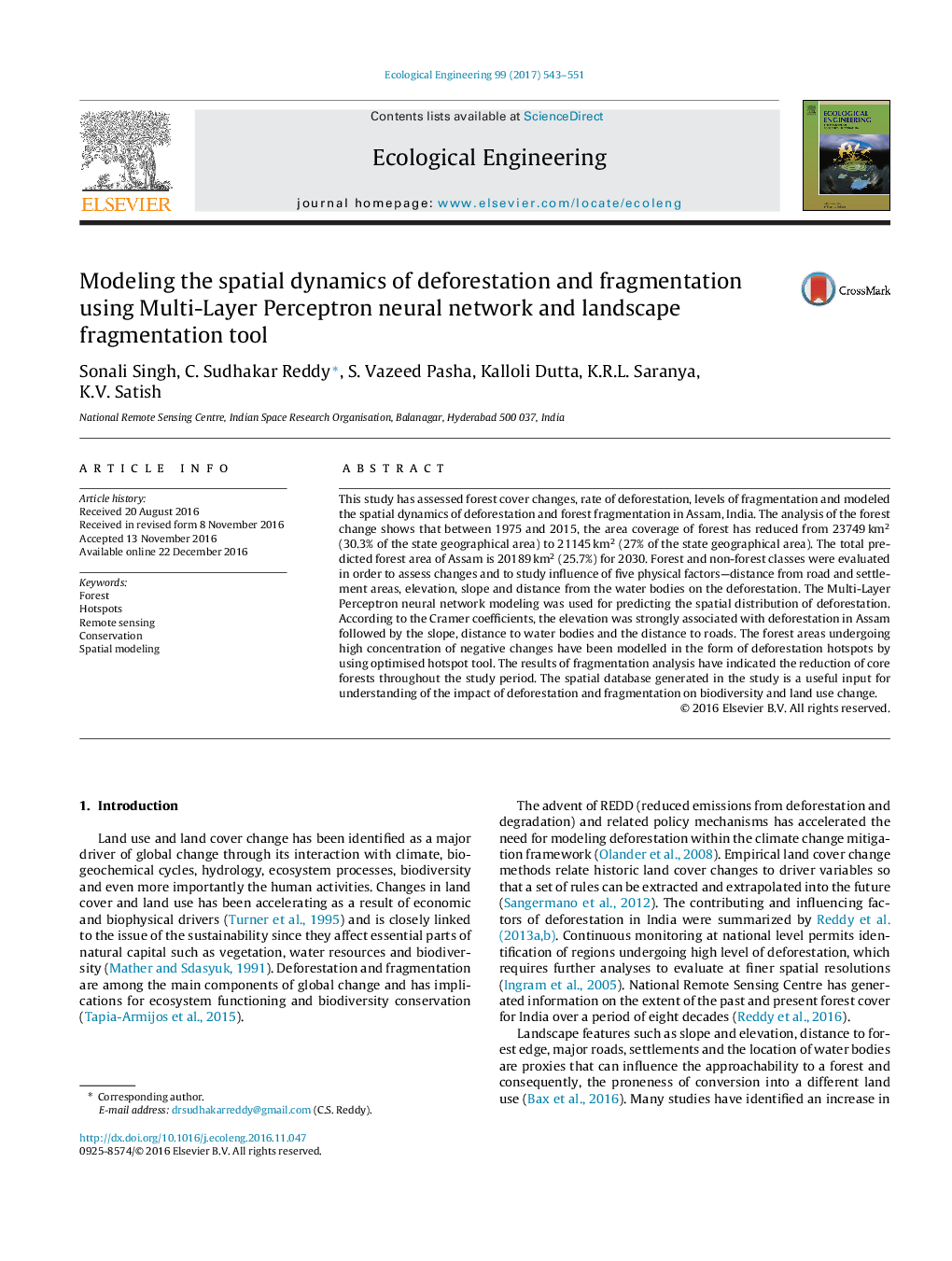| Article ID | Journal | Published Year | Pages | File Type |
|---|---|---|---|---|
| 5744025 | Ecological Engineering | 2017 | 9 Pages |
â¢Study assesses and monitors deforestation and fragmentation in forest ecosystems of Assam.â¢Multi-Layer Perceptron neural network modeling was used for predicting the spatial distribution of deforestation.â¢Evaluated the rate of changes in forests.â¢The results of fragmentation analysis have indicated the reduction of core forests.â¢Identified the deforestation hotspots.
This study has assessed forest cover changes, rate of deforestation, levels of fragmentation and modeled the spatial dynamics of deforestation and forest fragmentation in Assam, India. The analysis of the forest change shows that between 1975 and 2015, the area coverage of forest has reduced from 23749Â km2 (30.3% of the state geographical area) to 21145Â km2 (27% of the state geographical area). The total predicted forest area of Assam is 20189Â km2 (25.7%) for 2030. Forest and non-forest classes were evaluated in order to assess changes and to study influence of five physical factors-distance from road and settlement areas, elevation, slope and distance from the water bodies on the deforestation. The Multi-Layer Perceptron neural network modeling was used for predicting the spatial distribution of deforestation. According to the Cramer coefficients, the elevation was strongly associated with deforestation in Assam followed by the slope, distance to water bodies and the distance to roads. The forest areas undergoing high concentration of negative changes have been modelled in the form of deforestation hotspots by using optimised hotspot tool. The results of fragmentation analysis have indicated the reduction of core forests throughout the study period. The spatial database generated in the study is a useful input for understanding of the impact of deforestation and fragmentation on biodiversity and land use change.
